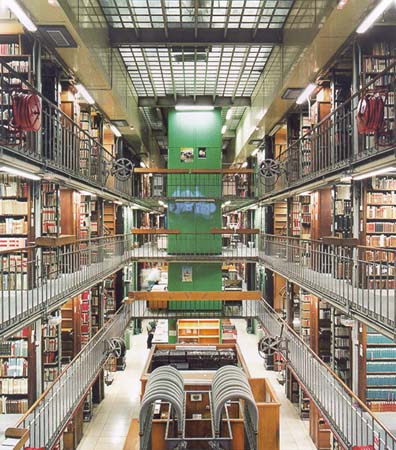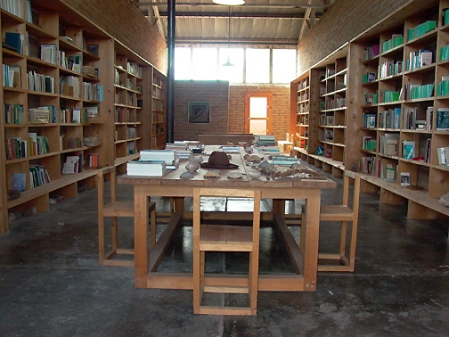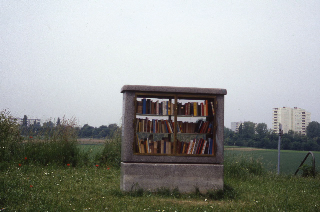
Art in the Library…
Orhizone
sketchbook
in progress…
Bibliothèque National de France (Candida Höfer)
In her photographs Candida Höfer is repeatedly drawn to public spaces that have been constructed for specific edifying purposes, such as libraries, museums, theatres and churches. However, her images tend to express the anonymity and functionality of such spaces and the absence of those who normally frequent and make use of them. While on one hand Höfer’s portraits of libraries (in London, Paris, New York and Dublin) embody an idea of grandiosity and classical beauty, on the other they suggest a rigid space based on notions of bureaucratic order, repetition, preservation and the transmission of rules, where cultural history is classified, administered and stored just as in any other space of enclosure. In light of current trends towards the introduction of fees for access to public libraries and restricting the use of some material to specialists, Höfer’s photographs can also be seen as a critique of the library space as a place of privilege and social exclusion.
The Donald Judd Library at the Judd Foundation
Located in Marfa, West Texas around 200 miles southeast of El Paso, the Judd Foundation holds and maintains Donald Judd’s private living and work spaces including a large library comprising some 10,000 volumes housed on shelves designed and built by the artist. Though it is possible to visit this library, neither the public nor the library’s administrators are permitted to move or even touch the volumes which, according to a clause in Judd’s will, must be left exactly how they were when he died. The library thus has something of the spirit of a pyramid or mausoleum, a monument to eternal absence and dead time made even more affecting by the arrangement’s peculiar combination of permanence and fragility, the fact that it would in theory be a quite simple matter to move or lift any of the volumes abandoned, along with Judd’s hat, on the central work table. The quasi-sacred, unattainable nature of the library is an illusion but a compelling one which holds the living under its spell.
The Open Library (Michael Clegg & Martin Guttmann)
The Open Library project, which has been running since 1991, is a reflection on the type of free, unregulated and autonomous education that can take place outside institutions such as universities, public libraries or even art galleries, based on the principle of sharing resources. For this project Michael Clegg and Martin Guttmann installed large improvised bookcases in different areas of a city, representing the different social strata of the population. To fill their shelves, they established direct contact with the community by going door to door collecting books. Once the collection was completed, the public was invited to the site and encouraged to borrow a number of books for a few days, then return them. The selection of books reflected the reading habits of the inhabitants of each urban district and provided an opportunity for informal self-education and communication. The artists describe the project as a ‘portrait of the community’ and a way of stimulating social imagination and collective responsibility in fragmented urban environments.



Leave a comment